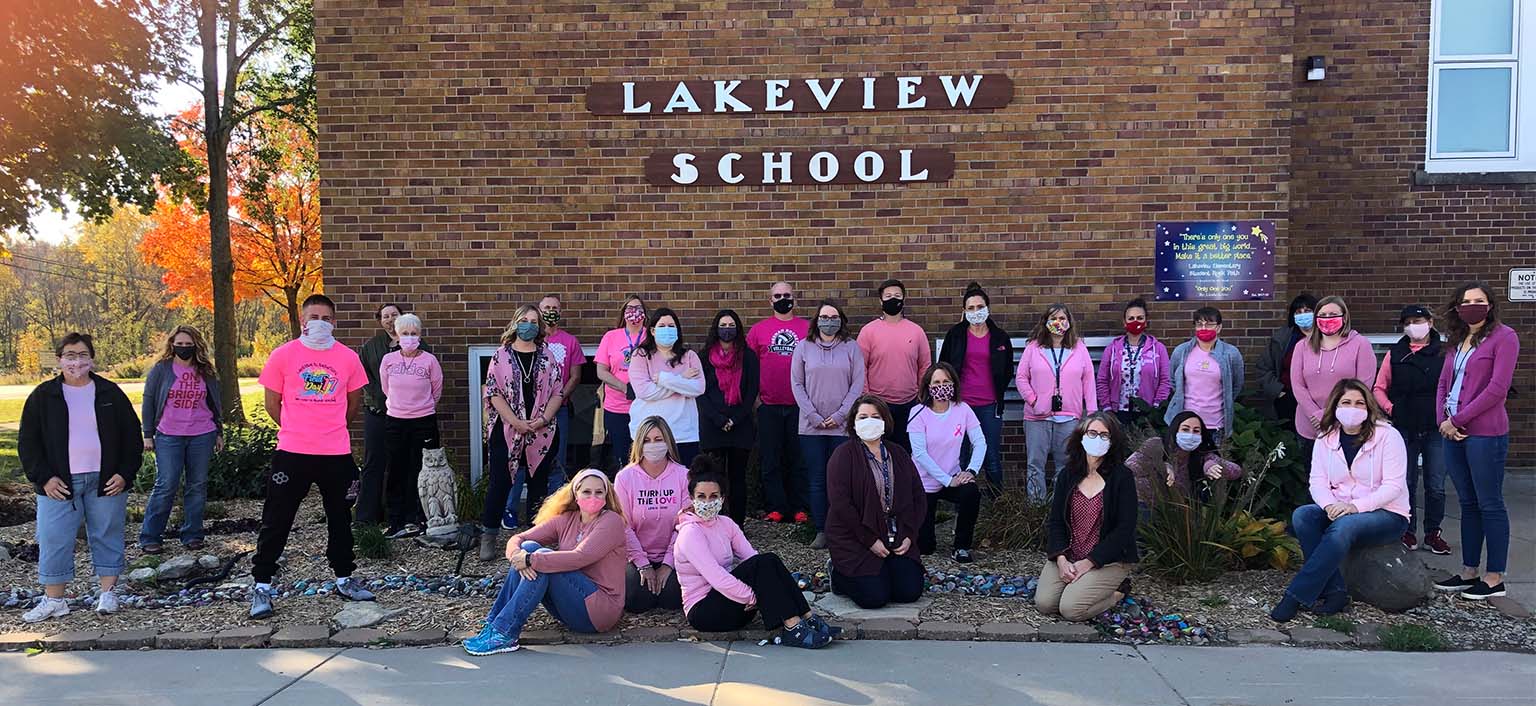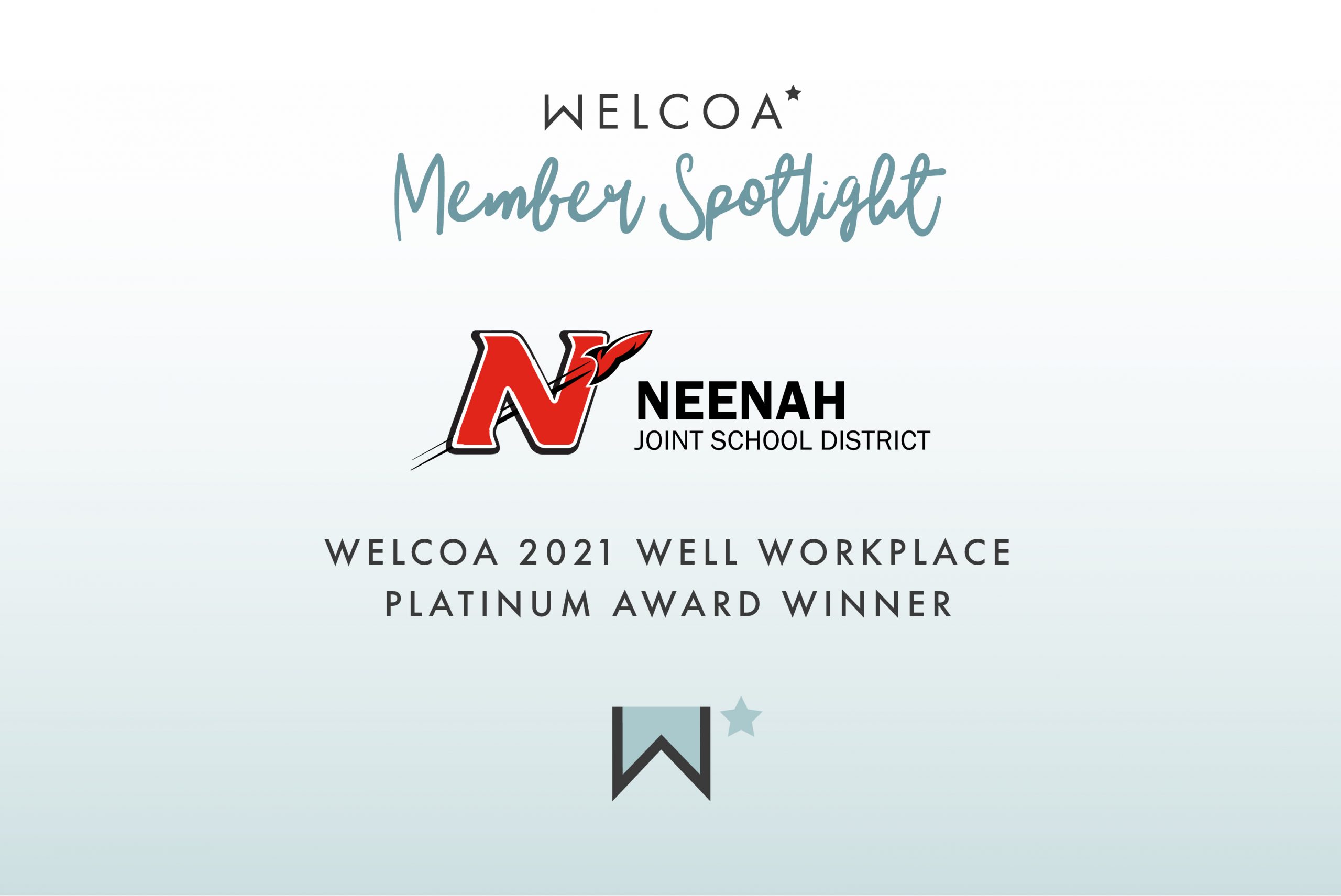During the COVID-19 pandemic, people spent a lot of time isolated and indoors, which helped foster an environment where some people now feel lonelier than ever. The result is a loss of social connectedness—the degree to which people feel the social connections and relationships in their lives to satisfy their wants and needs. When social…
Your Welcoa membership has expired.
Lessons Learned from an Award-Winning School District

The Neenah Joint School District in Wisconsin serves over 6,700 students with more than 700 employees. The district has a long history of investing in wellness programming and has consistently evolved and expanded the support it provides for its workforce. “We are broadening our focus from the traditional corporate wellness model, where health management is the main focus, to one that supports the whole person,” said Jessica Lehman, wellness coordinator for the Neenah Joint School District. “HRAs and screenings are a piece of what we do, but our program takes a human-first approach, encompassing mental and emotional health, financial wellness, career and development, and even community wellbeing. We also help employees find their purpose.”
With multiple locations and schedules, deploying wellness can be challenging. The district occupies 18 different locations, including school sites and administrative offices, and supportive programs housed throughout the city. The district’s staff is diverse, with K-12 educators, administrators, program directors and coordinators, support staff, and operations/maintenance personnel making up the workforce. “Meeting the needs of all the people in all the places, that has been hard,” Lehman said. “We know that one-size-fits-all approach doesn’t work for our organization, so we have to be creative, flexible, and responsive.”
Wellness champions serve as the “eyes and ears” for Lehman. They help her keep a pulse on each building, who each have a unique community culture and a different way of doing things. “They bring it back to the program, and we personalize,” Lehman said. “Meeting employees where they are is how we help everyone feel heard and valued.” This past year, wellness champions took on more ownership for their initiatives within their buildings. “We encouraged and empowered them to do so, and it sparked a lot of creativity,” Lehman said. “One of our champions came up with an initiative called ‘Miles for a Mission’ where employees can commit to running, walking, or biking 30 miles in a month. Each participant pays a fee, and the funds are donated to families in our community who have basic needs such as groceries, toiletries, etc. It’s been a great way to connect back to our local community, and our employees love it.”
Self-care has been a specific goal for the district, especially as the pandemic has placed tremendous pressure on its staff.
“Our employees by nature care for others first,” Lehman said. “We are trying to provide more self-care opportunities for them, knowing that they are less likely to prioritize caring for themselves. We want them to be patient with themselves during this difficult time, show themselves some compassion, and put themselves first. “To facilitate this priority, the district has increased the number of webinars available for staff and heavily promoted the organization’s EAP partner. Resources for anxiety, managing difficult emotions during uncertain times, and building resiliency have been focal points.
“We want our people to remember their ‘why’ this year and to give themselves more grace,” Lehman said.

Every six weeks, educators receive a personal development day with no students present. Wellness is a fixture on the agenda for these training days, including a dedicated hour set aside for self-care, which could be engaging with other colleagues, reading, meditation, or watching wellness videos on demand, such as cooking demonstrations. “It’s a great opportunity for them to have time on the clock to do a self-check and see what they need,” Lehman said. “Maybe they need to get a good sweat on through a virtual class or a treadmill. Maybe they need to sit alone and be quiet. Maybe they need to work on a craft and practice movement meditation.” Another way Lehman approaches self-care is through connection.
“I am always in search of that lightbulb moment,” Lehman said. “You know, that moment when someone says, ‘I get it.’ When they understand what it means to be well and to prioritize their health, the feeling of empowerment that can bring is powerful. So, it’s a matter of figuring out how to flip that switch. What is the one thing that will connect the dots?”
Part of that lightbulb moment, according to Lehman, is a connection to other people as a conduit for self-connection. “The best way to connect with ourselves is to connect with others,” Lehman said. “If we can feel empathy and compassion for other people, we can give the same gift to ourselves. On a deeper level, if we can see and feel each other’s experience, it helps us do the same for ourselves.”
When asked which WELCOA benchmark was most deeply entrenched in their organization, Lehman pointed to #2 Collaboration in Support of Wellness. “We have a very strong team, with more than 25 ambassadors and champions,” Lehman said. “We have lots of interest and many employees who are ready to help us plan and implement wellness across the organization. There is just a lot of interest and a lot of collaboration throughout the district, which makes our program very special.” Lehman said she finds WELCOA membership to be a key component for advancing the district’s program and her professional development.
“I literally attend everything WELCOA does,” Lehman said. “I have been using WELCOA as a continuation of my education. I love to participate in their member resource events and network with other professionals in my area. I lean on other wellness pros and just really appreciate having access to so many accomplished and knowledgeable practitioners. It can feel like you’re on an island, so being able to network, compare notes and make connections with people in my field has just been invaluable.”
While the district does incorporate traditional measures such as health data from claims and screenings to gauge the performance of their wellness program, Lehman says culture is the most important indicator of success. “When staff members feel it is ok to take mental health breaks when they need them, that is what success looks like,” she said. “When they have time to take walks when they have healthy food on hand when they feel like it’s okay to ask for help when they are happy to come to work, that means wellness is working. Culture can be hard to put into numbers, but it sure does impact all the things you can put into numbers. It’s the secret sauce.”
Another way to gauge impact is whether leadership has wellness top of mind when making decisions.“ Getting a seat at the table is critical,” Lehman said. “Everything is wellness. I’m always pointing that out. Equity? Personal and professional development? Culture? It’s all wellness. So, we need to be in that inner circle of leadership, advocating for our staff. That is critical.” As a final note, Lehman emphasized the role strategic flexibility plays in driving successful results for the district’s program. “We have to be understanding that some of the things we had planned just aren’t going to happen, or be what our staff needs,” Lehman said. “What I’d like to do, and what our people are ready for, might be different. This year, in particular, we have to be strategically flexible.”
Want to learn more about Neenah Joint School District’s award-winning wellness program, or how you can build your own?




